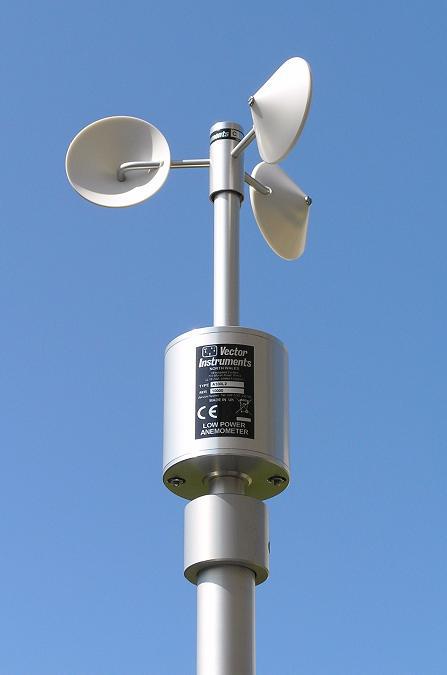How to Keep and Look After Your Anemometer to Make Sure Durability
How to Keep and Look After Your Anemometer to Make Sure Durability
Blog Article
All You Need to Learn About Anemometers: Just How They Work, Why They Matter, and Where to Utilize Them
Anemometers, though typically ignored in the world of clinical tools, play an essential function in numerous areas, providing important understandings into wind speed and air movement patterns. Understanding the mechanics behind these tools is vital for anybody looking for to harness the power of this data. From meteorologists tracking weather condition patterns to designers making frameworks with wind loads in mind, the applications of anemometers are far-reaching and varied. As we look into the ins and outs of anemometer technology, we will uncover the internal workings of these tools, their importance, and the key considerations when choosing the right anemometer for details applications.

Anemometer Essentials
An important instrument used to gauge wind rate and instructions, the anemometer plays an important role in weather forecasting and various markets. An anemometer normally contains 3 or four cups that revolve in the wind, a vane that directs into the wind, and sensing units to track the motions or turnings. By determining the rotations or activities over a details amount of time, the anemometer can identify wind rate. The vane assists identify wind instructions by directing into the wind, giving useful data for climate forecasting, aviation, maritime operations, environmental surveillance, and wind energy applications.
There are various sorts of anemometers offered, including mug anemometers, vane anemometers, hot-wire anemometers, and sonic anemometers, each with its one-of-a-kind attributes and applications. Cup anemometers are frequently made use of for fundamental wind rate dimensions, while vane anemometers are chosen for directional dimensions. Hot-wire anemometers appropriate for low airspeeds, and sonic anemometers are ideal for high-precision measurements in study and commercial settings. Comprehending the basics of anemometers is vital for exact wind data collection and analysis across various fields.
Principles of Anemometer Operation
Building on the fundamental understanding of anemometer essentials, the principles of anemometer procedure clarify the auto mechanics behind wind speed and instructions measurements. Mug anemometers, for circumstances, have 3 or even more cups that record the wind, triggering them to rotate much faster as the wind speed rises. Hot-wire anemometers depend on a warmed cable that cools down as wind passes over it, with the rate of cooling down identifying the wind rate.
Importance of Anemometers
Anemometers play a critical duty in gauging wind rate and instructions, giving crucial information for climate projecting, environment research studies, environmental tracking, and aviation operations. Meteorologists rely on anemometers to collect exact wind information, assisting them comprehend weather patterns, predict tornados, and concern prompt warnings to the public. Wind farm operators use anemometers to analyze wind problems and optimize power manufacturing from wind turbines.
Applications Throughout Different Industries
In the renewable energy sector, anemometers play an important function in examining wind conditions for wind farm placements, guaranteeing optimal energy production. Industries like building and mining use anemometers to keep an eye on wind rates, vital for safety and security procedures, particularly when working at heights or in open-pit mines where strong winds can posture threats. In farming, anemometers help Learn More farmers in my site handling crop splashing by giving real-time data on wind speed to avoid drift.

Choosing the Right Anemometer for Your Requirements
For basic functions, a cup anemometer is suitable for determining wind rate, while a vane anemometer offers wind direction data. Hot-wire anemometers are ideal for reduced airspeed dimensions, and ultrasonic anemometers provide high accuracy and durability.

Final Thought
Finally, anemometers play a crucial duty in determining wind speed and instructions across various industries. Recognizing the principles of anemometer procedure is necessary for selecting the appropriate gadget for specific needs. From meteorology to air travel, anemometers are essential tools for gathering accurate data and making certain safety and security in different applications. When choosing the most appropriate tool for measuring wind conditions., it is vital to consider the relevance of anemometers in order to make enlightened decisions.
There are different kinds of anemometers readily available, including cup anemometers, vane anemometers, hot-wire anemometers, and sonic anemometers, each with its special attributes and applications. Cup anemometers are frequently made use of for standard wind speed measurements, while vane anemometers are chosen for directional dimensions. Hot-wire anemometers are ideal for reduced airspeeds, and sonic anemometers are ideal for high-precision measurements in research and industrial settings.Building on the foundational understanding of anemometer basics, the principles of anemometer operation elucidate the mechanics behind wind speed and direction measurements. For basic purposes, a cup anemometer is suitable for gauging wind rate, while a vane anemometer provides wind direction information.
Report this page